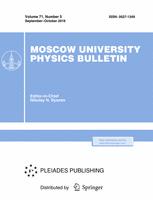Аннотация
В работе представлены результаты численного моделирования гидродинамических процессов в период существования осеннего термобара в озере Камлупс (Канада), полученные с помощью 2.5D негидростатической модели в приближении Буссинеска, учитывающей суточную изменчивость потока тепла на поверхности водоема. Проведена серия вычислительных экспериментов с различными значениями минерализации вод, поступающих из реки Томпсон. Расчеты показали значительное влияние минерализации вод речного притока на динамику горизонтального перемещения термического фронта и структуру индуцированных термобаром циркуляций в период выхолаживания озера.
Поступила: 19 июля 2017
Статья подписана в печать: 24 января 2019
PACS:
92.40.Cy Modeling; general theory
English citation: Numerical Modeling of the Effect
of Inflow Water Mineralization in the Dynamics
of the Autumnal Thermal Bar in Kamloops Lake
B. O. Tsydenov
© 2016 Издательство Московского университета
Авторы
Б. О. Цыденов
$^1$Национальный исследовательский Томский государственный университет
$^1$Национальный исследовательский Томский государственный университет



